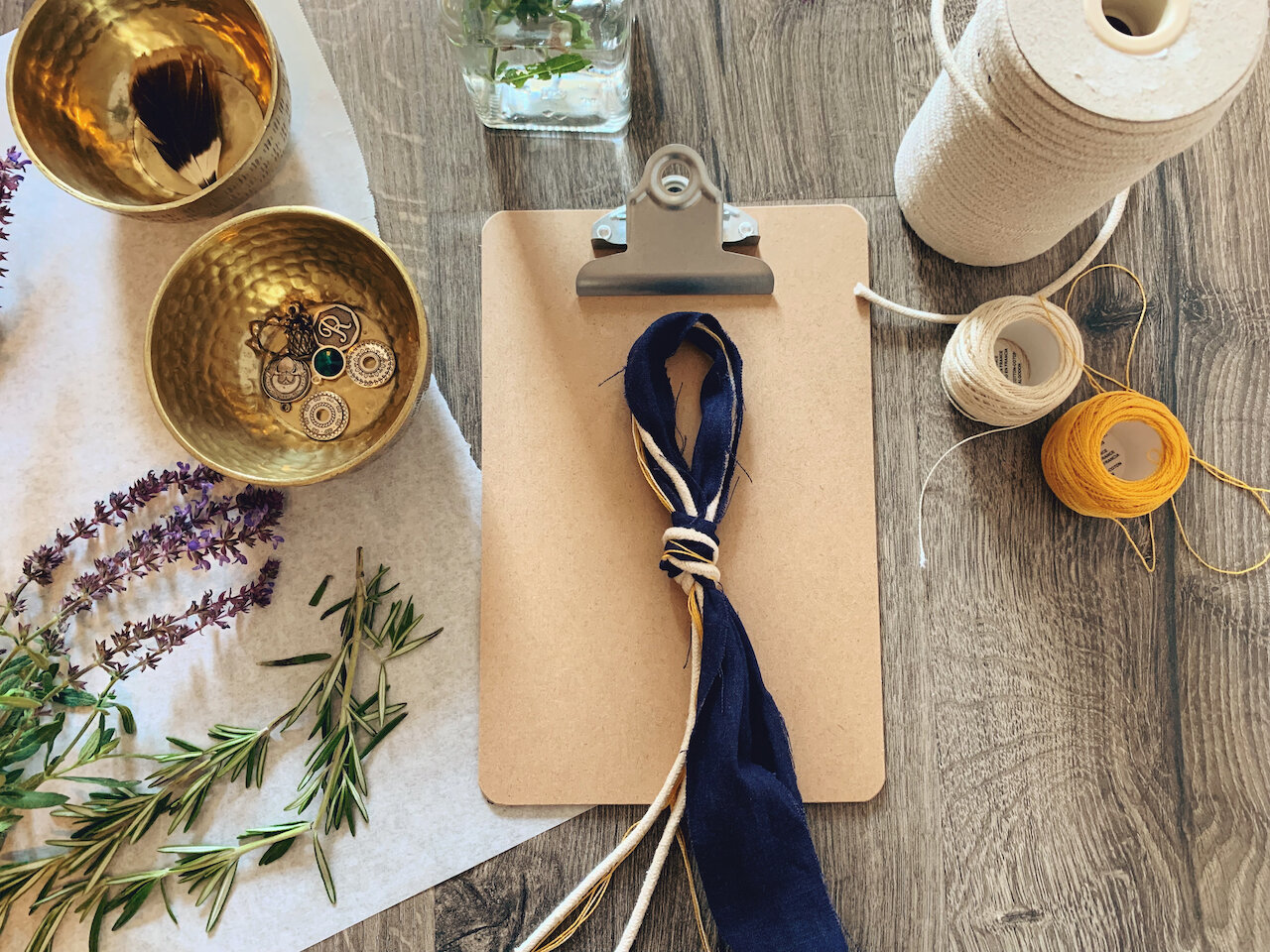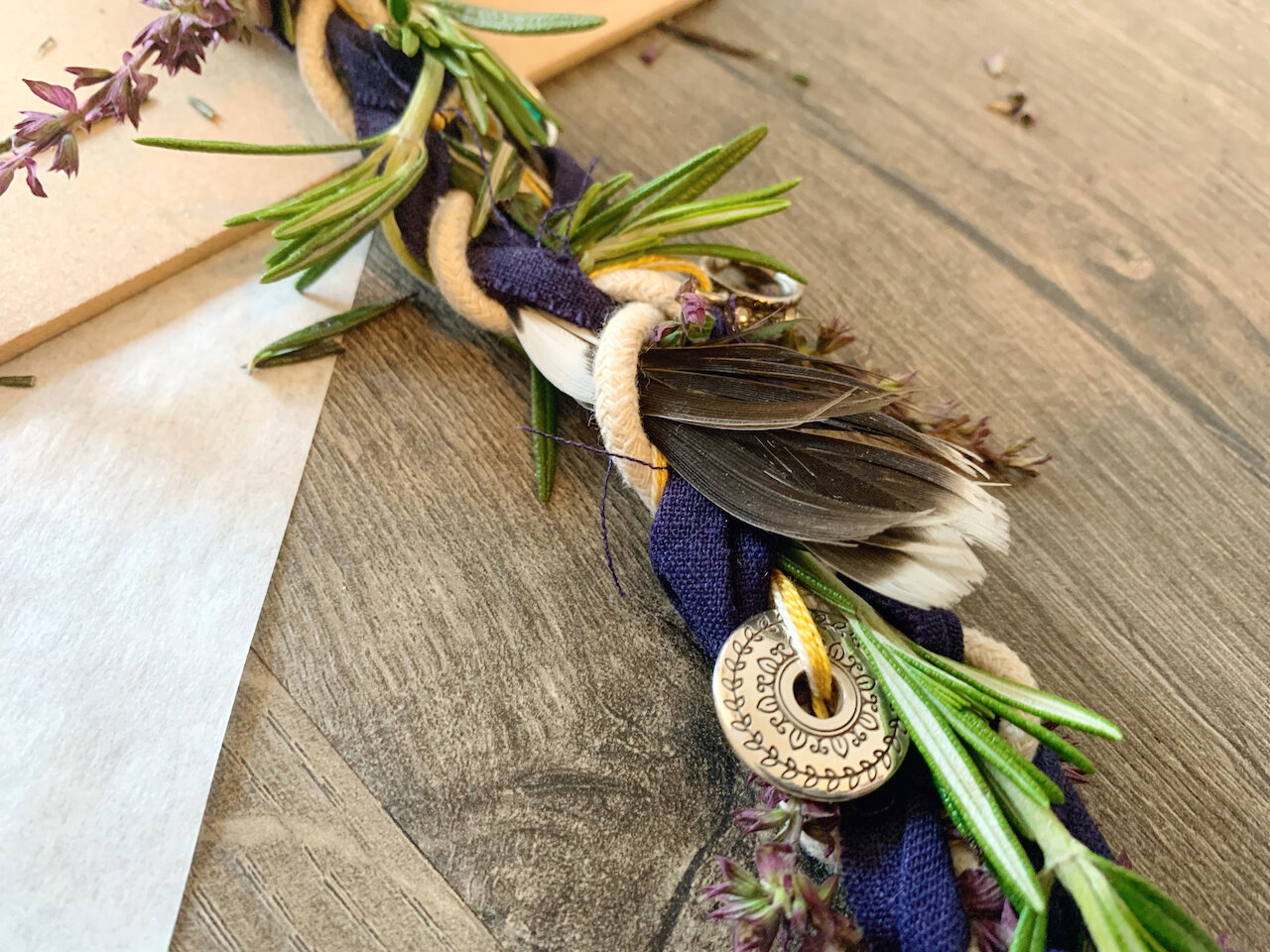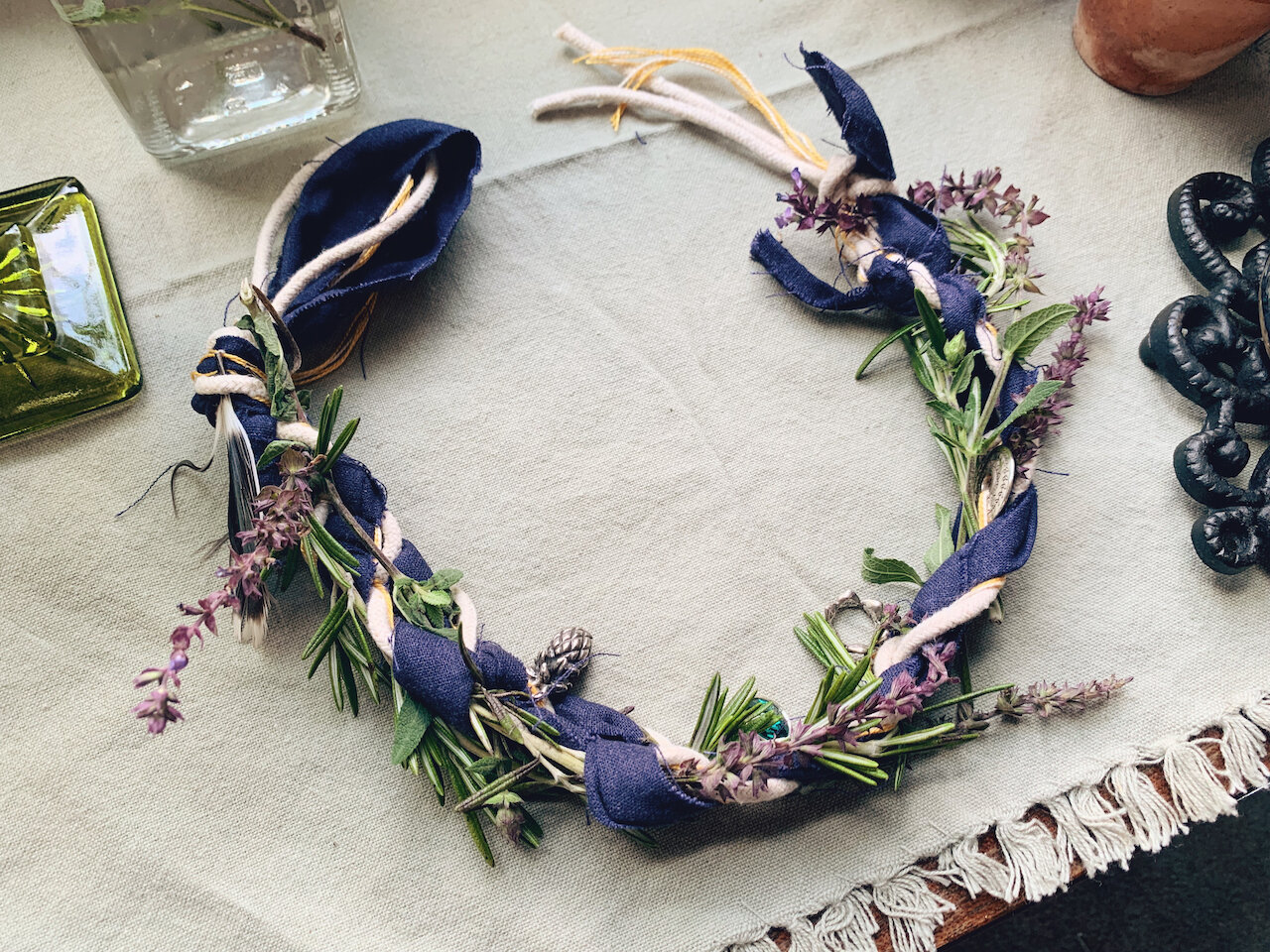Midsummer Ritual Part 2: Witch's Ladder
Follow: Instagram | TikTok | Facebook | Shop | Etsy | PatreonNote: This article was originally published by @gritchenwitch on Instagram. To learn about me and my practice, including more info on folk witchcraft, mountain magic, knot work, and hearthcraft, please visit gritchenwitch.com or join my Patreon at patreon.com/gritchenwitch.
This is the second post in my three-part Midsummer Ritual series.
MIDSUMMER RITUAL PART 1: SUMMER SIMMER POT
MIDSUMMER RITUAL PART 3: MOON WATER COOKIES
Let’s talk about knot magic! There’s so much great folklore associated with cordwork. In this example, I created my own version of a witch’s ladder, but the history of cord magic encompasses all kinds of needlework, including embroidery, quilting, and cross stitch. Even braiding hair is a traditional form of spellwork (mermaids!!).
I want to start off by mentioning that I am by no means an expert in knot magic and folklore. There are lots of books out there about the practice (you can find one below) that include the meanings and associations of different knots and how they’re tied. As with everything, my witch’s ladder incorporates my own traditions and preferences and can be adapted depending on your favorite items, colors, and intention.
I think I probably fell in love with cord magic when I started cross-stitching (like 25 years ago) but didn’t realize it at the time. I learned how to stitch at a Ukrainian church, and along with the basic technique, we were taught about the color meanings associated with thread and which geometric patterns were used to protect the wearer from harm. As I got older and discovered early needlework samplers, I learned that while these were also used as tools for teaching needlework, they were packed with symbolism. Weeping willows showed up on mourning samplers to represent loss, stitching a dog stood for loyalty and protection, holly meant hope and joy. My tapestree, which is done in cross stitch, is an example of cordwork—whenever I stitch a design to symbolize an aspect of my life, I’m putting a lot of energy and intention from that moment into every cross. I can hear the memories screaming at me when I look at that thing.
Imagine someone sewing a quilt for his or her new baby niece and spending all of those hours thinking about happy family moments and future memories—that quilt would be totally energized with love. Similarly, there’s record of witches weaving ladders while concentrating on the hardships of their loved one, and then tossing the whole thing in the river, throwing the difficulties away with it.
This also isn’t to say that I think every stitcher is a witch or that all knitting is rooted in something spiritual. Crafts can be crafts. But I love the folklore associated with threads and knots and am excited to share some of that here.
In the book Knot Magic, the author explains how sailors purchased ‘magic knots’ containing weather magic for harnessing wind:
In weather magic, the knots have to be untied by the person who has bought them. This sets free whatever was bound into the original knot, e.g. the wind. The winds were sold as commodities, fully-empowered, so having them ready to sell must have made sense in busy ports. They could be easily prepared in advance during quiet periods and then sold when the boats docked and the sailors came ashore.
Penry, Tylluan. Knot Magic (p. 110)
In my version, I’m using charms, cords, and stems to create a protection garland for my home in celebration of midsummer.
Start by gathering everything you’ll need for your ladder. In part one of this ritual, I charged the macrame, thread, and charms under July 24th’s full moon. For texture, I cut a strip of raw blue linen, which works well for health and protection. I also wanted to incorporate salvia (from the sage family, which adds purification and longevity) from our garden and rosemary (for home blessings and to represent the sun)—both fresh so they’re easier to work with. A small clipboard comes in handy for holding everything in place, but you can just as easily tape your cords to the floor.
For this ladder, I started in the middle. Lay out your cords and strings (it helps if they’re all the same length) and pinch them in the middle. This is the top.
Gather everything together in an overhand loop knot (diagram here). This is a super-easy knot and leaves you with a convenient loop to hang your ladder (or tie in a circlet).
Just like braiding, you’ll want to separate the cord (or groups of cords) into sections for weaving. I’m using a four-strand flat plait (this “doubles the intention”) but using three strands is also great. Whatever makes you most happy and comfortable is going to have the strongest energy.
If you’re not familiar with four-strand, here’s a good YouTube tutorial. Practice a few times before starting—everything goes much smoother when you get a rhythm.
And start braiding!
After a minute, I started incorporating my stems.
If you want, you can braid the whole thing and then go back and weave your greenery through your ladder. Even though they’re fussy, I like working with the plants, so this is where I started to add them in, assigning a stem to one of the four cord groups.
This feels like a good time for a knot.
I love a pineapple as a symbol of welcome and hospitality (perfect for a home blessing). I added the first charm by threading it on a couple of the embroidery threads and tying a simple single knot with the opposite yellow strands to hold it in place.
Now’s a good time to mention that regardless of whether you’re keeping your ladder close to you or throwing it in a river, you should never make a knot that can’t be untied. No matter how benevolent and joyful your intentions, it’s never a good idea to create spellwork that cannot be undone.
Also at this point, make sure you’re comfortable and pausing whenever you need to adjust. Say a blessing, drink some water—make sure you’re not injecting frustration into your knots.
I also had an emerald (promotes domestic bliss and corresponds to Litha!) that I wanted to include.
Continue braiding until you reach the end. I finished by simply tying two of the cord groups together.
Once everything is tied up, go over your ladder like you would a hair braid and pull at the plaits to open them up a bit. Add in more of your stems if needed. I remembered a feather I found in my yard this month and wove that in too.
Once you’re finished, you’ll have a beautiful representation of love and protection for your home (or for yourself or someone you love!).
A couple more notes:
For this ladder and those with similar intention, touching the knots is a great way to re-energize.
When it feels like your ladder isn’t doing its job anymore, it’s best to replace it. You can unknot your ladder and cleanse the materials, or bury it and create something new (make sure you’re using natural materials in this case so it will decompose).
Ladders are so versatile and make beautiful vessels for spellwork. I hope this provides an approachable way to get started!
🌿 Rachel
















